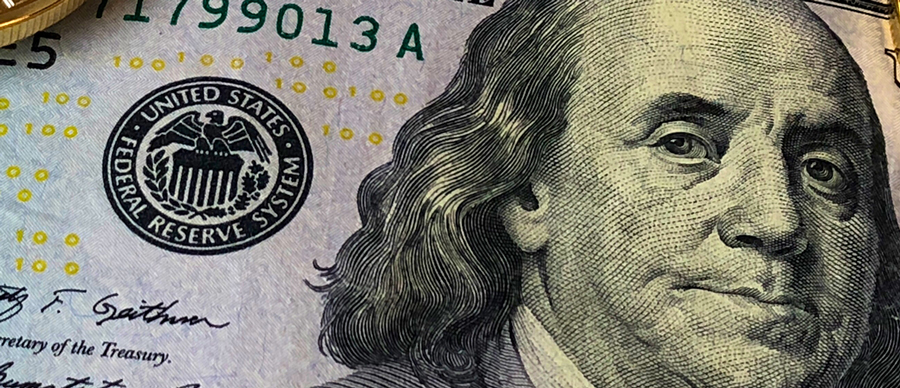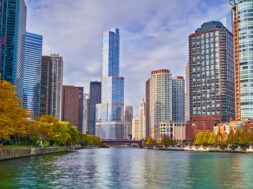Once-Cheap Loans Could Become Expensive Burden as Rate Hike Looms
Cheap credit helped fuel economic growth after the global financial crisis, but with interest rates set to rise in December, future growth is uncertain.

After unanimously voting to delay raising interest rates at its November meeting, the Federal Reserve’s policy-setting body will likely approve a long-expected hike later this month. The move follows a long period of low interest rates that have fueled borrowing at companies at levels that may have put them at risk.
The Federal Open Market Committee is set to increase the federal funds rate from its current target range of 2-2.25 percent to 3 percent or higher after it meets on Dec. 18-19. Fed officials say interest rates are close to reaching a “neutral” point where any further increases could hamper economic growth. Speaking at the Economic Club of New York last week, Federal Reserve Chairman Jerome Powell said interest rates are “just below” that level.
“Almost all participants expressed the view that another increase in the target range for the federal funds rate was likely to be warranted fairly soon,” said Fed officials, according to minutes from the November meeting. The Fed generally raises rates to discourage overinvestment and prevent financial bubbles. The December hike will be the ninth since 2015.
Following the 2008-09 global financial crisis, low interest rates and access to cheap loans helped fuel one of the longest periods of economic growth in U.S. history. Even with steady increases over the past several years, interest rates remain historically low and many companies have taken advantage of the current lending environment by investing in facility expansions and hiring additional staff.
Yet increased borrowing has sparked concern at the Fed, which described what it views as high levels of corporate debt in its first-ever Financial Stability Report published last week.
Including noncorporate business credit and commercial real estate, the Federal Reserve reports more than $14 trillion in outstanding business credit, which has grown nearly 5 percent over the last year.
The Federal Reserve reports more than $14 trillion in outstanding business credit, which has grown nearly 5 percent over the last year.
Use of riskier forms of business debt, including high-yield bonds and leveraged loans, has rebounded in recent quarters and has grown fastest among firms with weak earnings, the Fed report showed.
With three hikes enacted in 2018 and one more planned before the end of the year, the cost of short-term, high-yield debt could double and negatively impact balance sheets. “Even small changes [in the interest rate] can mean big changes in expenses,” Grant Thornton Chief Economist Diane Swonk says.
This could disrupt mergers and acquisitions activity as well. While M&A volume remains high, buyers have become more selective in response to elevated prices and rising interest rates. “If you’re not one of the best companies, you’re either in or out,” she says.
The current high-price environment can spell greater risk as buyers struggle to generate a return on their investment, and transactions that rely on excess leverage as a financing tool may lead a company to restructure, a prospect that makes lenders uneasy.
Rising interest rates could lead to more bankruptcies if companies don’t act to protect themselves. According to the Citizens Market Insights Survey of more than 300 corporate leaders, 70 percent have not locked in lower interest rates. However, the survey conducted by Citizens Bank also found that 82 percent of corporate leaders plan to take corrective action before interest rates begin to compress profits.
Whether that’s enough depends on the economy’s performance. Debt levels in a higher-cost lending environment can be justified in a healthy economy, and so far, economists say indicators such as low levels of unemployment, inflation and oil prices suggest an optimistic outlook.
Stock market volatility and geopolitical risks such as trade disputes with China could upset the balance. However, U.S. President Donald Trump and Chinese President Xi Jinping agreed to a stopgap suspension of tariffs at the G-20 summit held over the weekend in Buenos Aires, Argentina, further improving the economic outlook, according to reporting from The New York Times. U.S. officials have a 90-day period to draft a permanent resolution and experts say tariffs could resume if no agreement is reached.
Debt levels in a higher-cost lending environment can be justified in a healthy economy, and so far, economists say indicators suggest an optimistic outlook.
Speaking on a panel at the ACG New York Policy Breakfast on Nov. 29, Bloomberg Businessweek Economics Editor Peter Coy offered an optimistic outlook for the Federal Reserve. Powell’s comments at the Economic Club of New York the day before were interpreted by market watchers as a sign that interest rates would not increase as quickly as previously indicated. “He’s not a guy that’s going to raise rates in a way that would kill the economy just out of some abstract commitment to an economic model,” Coy said.
The Fed also voiced reluctance toward aggressive rate hikes in 2019 if they don’t fit with economic data. “Monetary policy was not on a preset course,” officials said.

Benjamin Glick is ACG Global’s marketing and communications associate.


